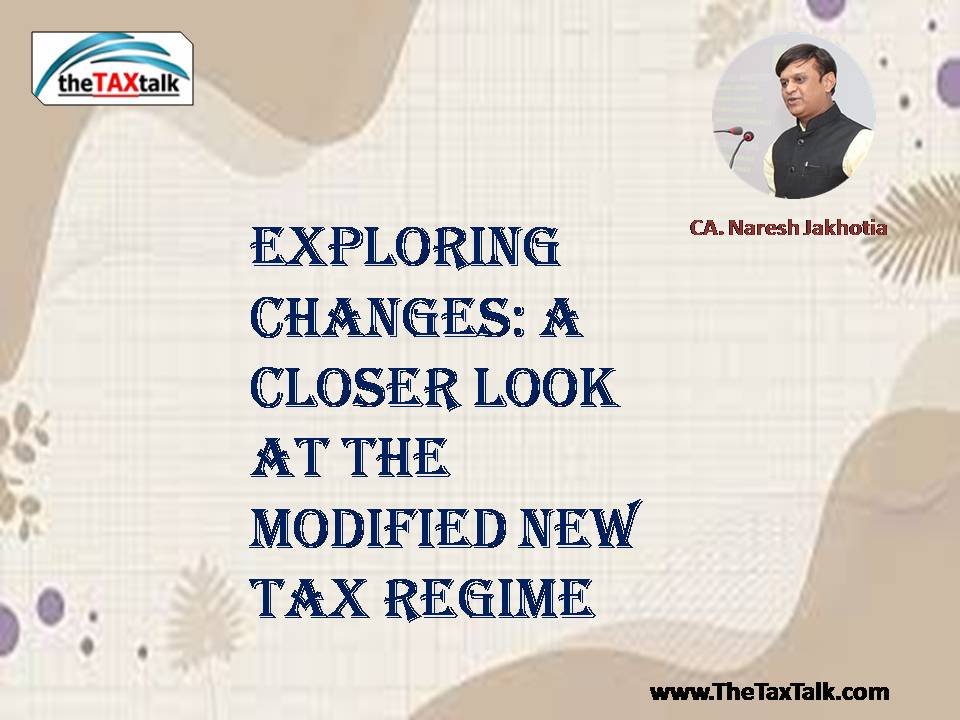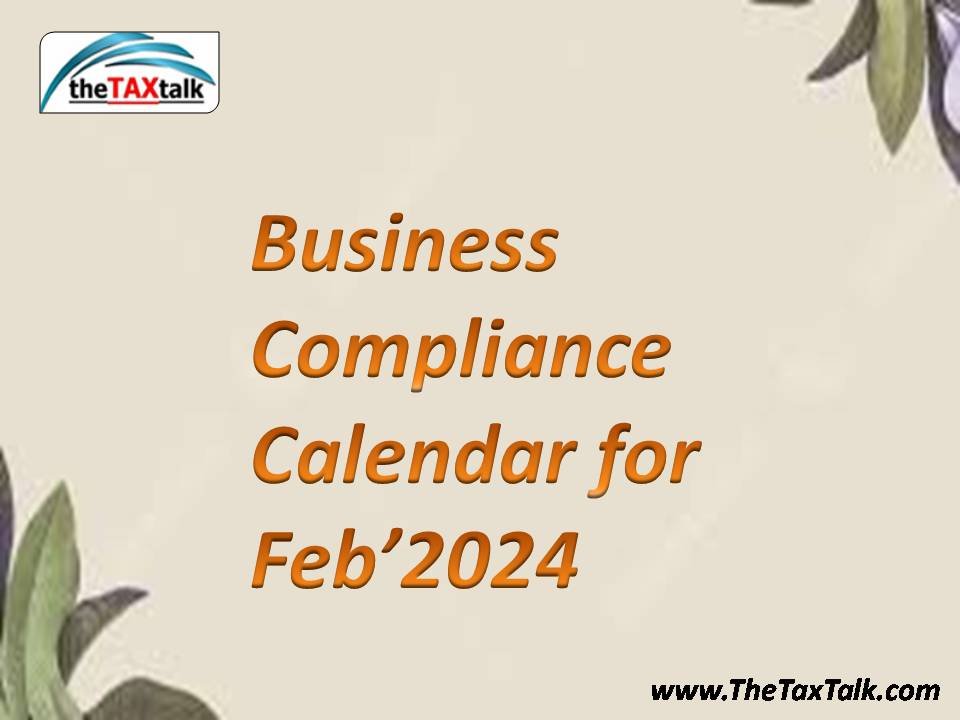![]()
Exploring Changes: A Closer Look at the Modified New Tax Regime
Query 1]
My total salary income for the FY 2023-24 will be around Rs. 7.16 Lakh and my deduction U/s 80C would be around Rs. 92,000/-. I am working in a NMC and the employer has done a TDS of Rs. 7,000/- so far. My employer has now asked me whether I wish to opt for the new regime or old regime. What is the difference between the old regime and the new regime? In the earlier year, I filed ITR under the old tax regime. Should I change it now? Please guide. [SD]
Opinion:
Many taxpayers are confronted with the challenging decision of choosing the most advantageous tax regime under the income tax law. The major differences between the old tax regime and the new one are the different Tax slab/tax rates and the ability to secure concessions and rebates. The old tax regime allows taxpayers to enjoy a plethora of exemptions and deductions aimed at bringing down their taxable income. New tax regime restricts the deduction and exemption. With effect from FY 2023-24 (AY 2024-25), there are remarkable changes in the new tax regime vis a vis old tax regime. Let’s delve into the details as it is crucial now for all taxpayers.
- Different Basic Exemption Limit:
The basic exemption under the old regime for non-senior citizens is Rs. 2.50 Lakh whereas it will be Rs. 3 Lakh under the new regime. - Tax Rate under both the Tax Regime:
The tax rate and slab under the new tax regime is as under:
| Total Income (Rs) | Rate |
| Up to 3,00,000 | Nil |
| From 3,00,001 to 6,00,000 | 5% |
| From 6,00,001 to 9,00,000 | 10% |
| From 9,00,001 to 12,00,000 | 15% |
| From 12,00,001 to 15,00,000 | 20% |
| Above 15,00,000 | 30% |
Under the old tax regime, the tax rate is 5% for income between Rs. 2.50 Lakh to 5 Lakh, 10% for income between Rs. 5 Lakh to 10 Lakh & 30% for income above Rs. 10 Lakh.
- Increase of Tax Rebate limit to Rs. 7 Lakh:
Higher tax rebate is now available for the taxpayers opting for new tax regime as the same has been raised from Rs. 12,500/- to Rs. 25,000/-. In essence, now all individuals earning up to Rs. 7 Lakh are exempt from paying tax & will not be required to pay a single penny under the new tax regime. Since the limit of rebate has been increased and not the basic exemption limit, there is no immunity from the process of filing income tax return for such taxpayers.
- Benefit of Standard Deduction extended to New Tax Regime:
Earlier, the benefit of standard deduction of Rs. 50,000/- was not available to the salaried taxpayers opting for the new tax regime. Now, the benefit of the standard deduction of Rs. 50,000/- & deduction from family pension up to Rs. 15,000/- has been extended to the taxpayers opting for the new tax regime also. As a result, the salaried taxpayers with income up to Rs. 7.50 Lakh will have zero tax liability.
- Reduction in Highest rate of Surcharge from 37% to 25%:
The highest surcharge rate for individuals in the new tax regime is also reduced from 37% to 25%. As a result of this, the maximum marginal rate for individuals shall be reduced from 42% to 39%. This will be another motivation to High net worth Individual (HNI) to opt for the new tax regime.
- Though the new tax regime is simple to follow, it will still be worthwhile to do the mathematics before opting for it. The million dollar question is, how should taxpayers make this choice? Both regimes have their own sets of pros and cons. The choice would necessarily depend on:
i) Income slab of every individual.
ii) Extent of exemptions and deduction available with the taxpayers.
iii) Alternate investments options & returns thereon if taxpayers prefer not to opt for the new regime.
iv) Short term and long term financial goals of the taxpayers.
- Your case is relatively straightforward, and opting for the new tax regime seems beneficial, given that your tax liability would be nil, allowing you to claim a refund of the TDS amounting to Rs. 7,000/-.
However, the decision becomes more complex for other taxpayers in higher tax brackets. We will discuss the same in our next issue of The Tax Talk.
[Readers may forward their feedback & queries at taxtalknew@gmail.com. Other articles & response to queries are available at www.theTAXtalk.com]




